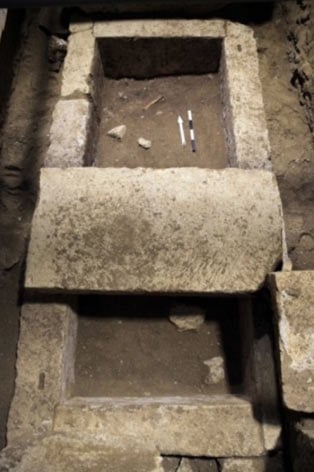It is the moment that archaeologists and history buffs around the world have been waiting for; after months of intensive excavations within the Amphipolis tomb in northern Greece, and speculations regarding its owner, human remains have finally been discovered within a sarcophagus in a secret vault beneath the third chamber of the tomb.
The vault was discovered in the Amphipolis tomb earlier this month when archaeologists finished clearing away the debris from the floor of the third chamber. The vault, measuring 4 by 2.1 meters was sealed with limestone. According to an announcement on Mega TV News, after removing the limestone and digging down approximately 1.6 meters, researchers discovered a large limestone sarcophagus, measuring 3.2 by 1.6 meters.
Within the limestone box was a wooden coffin, which had been sealed with iron and bronze nails. Bone and glass decorative elements and skeletal remains were found both within and outside the wooden coffin.

The limestone sarcophagus found in a secret vault beneath the third chamber of the Amphipolis tomb. Credit: ANA-MPA
The Ministry of Culture in Greece announced that the hidden burial compound in the Amphipolis tomb provides further evidence that the deceased was a prominent figure. The remains will now be examined by specialist scientists in an attempt to unravel its identity.
All evidence uncovered so far points to the tomb's owner as being a Macedonian royal, related to Alexander the Great, with the most popular theory pointing to Olympias, Alexander's mother. Archaeologists are already calling the Amphipolis tomb ' the discovery of the decade '.
Featured image: A sketch of the limestone sarcophagus found beneath the floor of the third chamber of the Amphipolis Tomb in northern Greece. Credit: ANA-MPA








